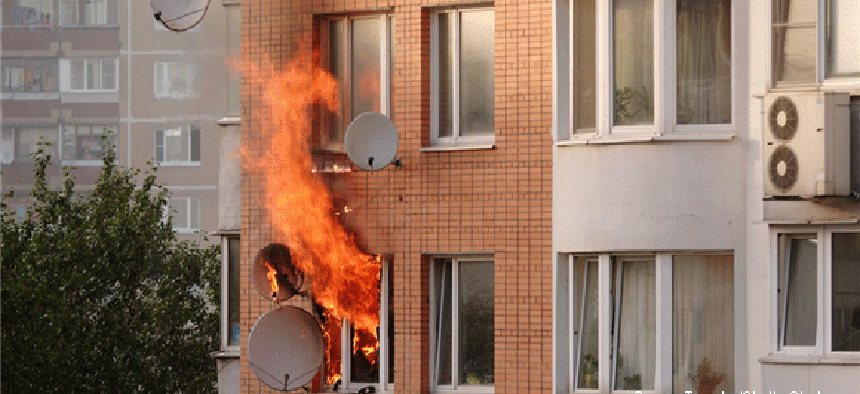FCC tests if 911 cell-phone calls can be traced indoors

With a growing number of 911 calls coming from cell phones, an FCC committee wants to set benchmarks on the accuracy of calls made from inside buildings.
As telephones have become untethered and phone numbers are no longer tied to an address, the ability of first responders to pinpoint the location of cellular phone calls to 911 has become increasingly important.
The Federal Communication Commission already requires a level of accuracy for locating the origin of cell phone calls made outdoors, but the technologies being used tend to break down inside buildings. An FCC advisory committee is conducting a study in the San Francisco Bay area to establish benchmarks for the accuracy of current location technologies.
The six-week program is being carried out by a working group of the Communications Security, Reliability and Interoperability Council, made up of industry and government 911 stakeholders. Testing began Nov. 15 and is expected to be completed by year’s end, said Norman Shaw, executive director of government affairs at Polaris Wireless, a company that provides 911 location services, and co-chair of the indoor location working group.
A final report on the current state of the art is expected to be finished in March, which could help to decide whether and how location requirements for 911 calls should be extended indoors.
The committee initially recommended that such requirements were not yet practical. “To extend regulation indoors at this time would be premature because we don’t have any data,” Shaw said. Current tests are intended to provide needed data.
A possible solution considered by CSRIC for indoor 911 is use of commercial location-based services, which deliver ads and other services to mobile devices based on their location. Such a scheme might work, Shaw said, “but there are huge impediments to be overcome.”
The impediments are primarily legal and social rather than technical, he said. Companies providing such services are concerned about liability issues if information is inadequate or inaccurate in a life-and-death situation.
The testing of carrier technologies is being held in 80 buildings in the Bay Area, representing dense-urban, urban, suburban-residential and rural environments. Gaining access to buildings and cooperation from major cellular carriers was a major undertaking, Shaw said. There are multiple test sites in many of the buildings, and 100 calls will be made from each test point.
Technologies being tested are Polaris’s radio frequency pattern matching, which uses location-based “signatures” to identify the origin of a call; advanced forward link triangulation as used by Qualcomm; a low-Earth-orbit assist for GPS being proposed by Boeing; and a system of terrestrial GPS repeaters from NextNav.
The ability to locate the origin of calls is important because callers in an emergency sometimes do not know their exact location or might not be able to give it to a 911 operator. Through a service called Enhanced 911, incoming calls from landline phones are automatically accompanied with location data. Carriers are required to provide location data for outdoor cellular calls, usually delivered from a combination of Global Positioning System data and triangulation from carrier cell towers.
Estimates of the percentage of 911 calls coming from cell phones range from 70 percent to more than 80 percent.





